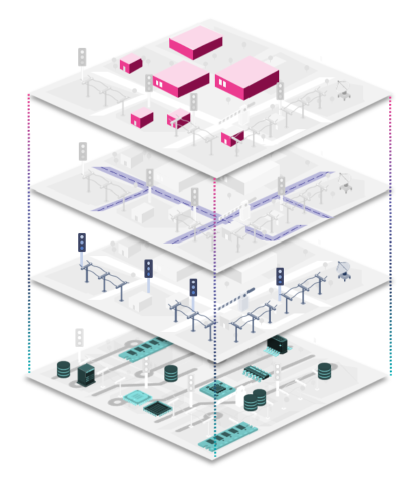The Business Value of Enterprise Architecture
Many business leaders still today have a rudimentary understanding of Enterprise Architecture (EA) as an “IT-based framework that lets my CIO have visibility of our apps and technology”. While that is an outcome of having an EA in practice at an organisation, it is not representative of what it truly is or the genuine business value it can provide to businesses of all shapes and sizes.
Much of this disconnect comes from how we articulate what EA is and why we should invest in it. The key to the successful buy-in and adoption of EA stems from leaders understanding what EA is, what it does for them and its value to their business.
Let’s start with one of the most common definitions of Enterprise Architecture.
Gartner defines Enterprise Architecture as “the process of translating business vision and strategy into effective enterprise change by creating, communicating, and improving the key principles
and models that describe the enterprise’s future state and enable its evolution”
What does that mean?
A commonly used analogy to assist in explaining enterprise architecture in the business context is that of the Town Plan.

Think of enterprise architecture as the town plan of your organisation. It starts with a clear view of your business, its services, and capabilities. Like a town plan, this is supported with layers of plans that identify and map important elements such as information and data, how that is connected and automated, and what key systems support the services and use of data. Through to layers that identify the underlying technology, infrastructure and security of those business services and capabilities.
Additionally, this town plan provides an end-to-end visibility of your business that enables a fuller understanding of where your business stands, its current investments, and identifies opportunities for efficiency and productivity gains.
The town plan represents the current state of the business. Leaders can look to set their future vision and strategy, with a future state plan that then provides visibility and understanding of the impact and what the priorities need to be to truly deliver on those future outcomes through all the plan layers. This is an important factor as it provides a decision-making framework for where the supporting and underlying Information Technology investments can be made. It identifies past investments leveraged, the impact on people, services and processes and provides an opportunity for cost and efficiency gains through considering the future state holistically, not initiative by initiative.
At the highest level, the “what’s in it for me” for business leaders has best been described by The Open Group’s identified business benefits of Enterprise Architecture.
Benefits of Enterprise Architecture:
More effective and efficient business operations:
- Lower business operation costs
- More agile organisation
- Business capabilities shared across the organisation
- Lower change management costs
- More flexible workforce
- Improved business productivity
More effective and efficient Digital Transformation and IT operations:
- Extending effective reach of the enterprise through digital capability
- Bringing all components of the enterprise into a harmonised environment
- Lower software development, support, and maintenance costs
- Increased portability of applications
- Improved interoperability and easier system and network management
- Improved ability to address critical enterprise-wide issues like security
- Easier upgrade and exchange of system components
Better return on existing investment, reduced risk for future investment:
- Reduced complexity in the business and IT
- Maximum return on investment in existing business and IT infrastructure
- The flexibility to make, buy, or out-source business and IT solutions
- Reduced risk overall in new investments and their cost of ownership
Faster, simpler, and cheaper procurement:
- Buying decisions are simpler, because the information governing procurement is readily available in a coherent plan
- The procurement process is faster – maximising procurement speed and flexibility without sacrificing architectural coherence
- The ability to procure heterogeneous, multi-vendor open systems
- The ability to secure more economic capabilities
Furthermore, when articulated well, and with a business centricity, we have seen obstacles removed and a greater level of understanding and desire to include enterprise architecture into the fabric of our clients’ businesses.
How GWI can help
GWI supports our clients through a range of enterprise architectural services. For example, establishing EA operating models, supporting digital transformation through the development of current state, future state and transition state architectures through to developing and providing EA governance.
Additionally, we have deep experience in identifying cost and efficiency opportunities through business capability modelling and process mapping and delivering other enterprise-architecture-as-a-service capabilities.
Overall, our clients are empowered to streamline their operations with more efficient and modern ways of working, allowing them to focus on delivering positive outcomes for their customers and stakeholders.
GWI’s EA services are backed by a highly skilled team. We define a plan of action using technology to solve complex business problems. Want to know more? Get in touch today www.gwi.com.au/contact





